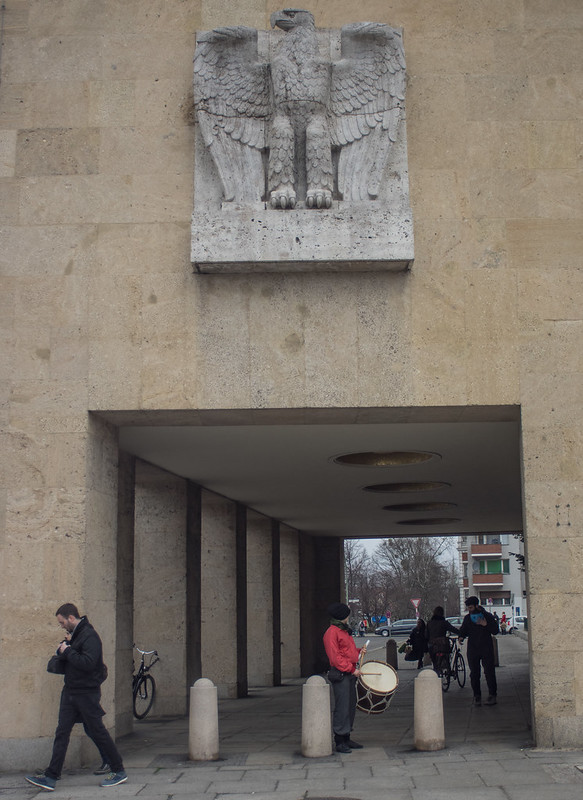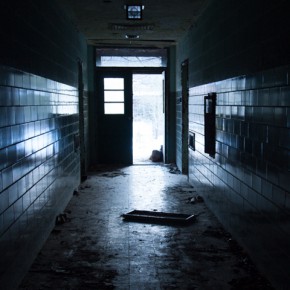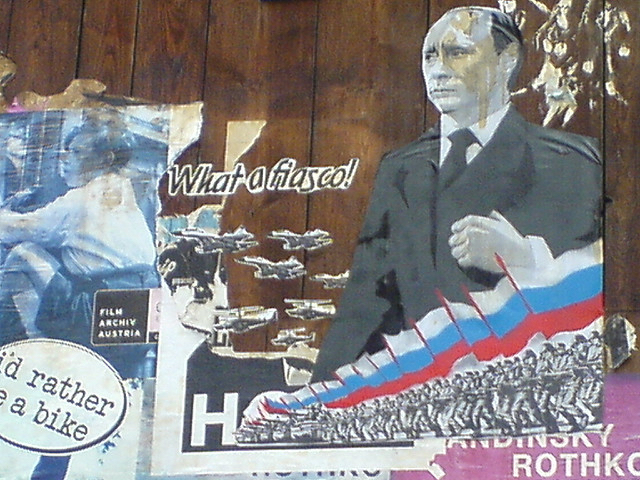Talking about politics in the United States these days can give one the feeling of being a latter day Edward R. Murrow, broadcasting from London in the days of the Battle of Britain. Certainly the differences are massive and cannot be ignored, not the least of which being that we are the ones launching explosives at other people.
Still, for the thinking person trying to parse their way through the vicissitudes of the political public sphere in these times, there is a persistent element of the bizarre underlying the whole scene that makes it possible to overlook even the above-mentioned contradiction.
It is with relief that one can relate that much of the fatuous discussion about which mid-20th century fascist figure most resembles Donald Trump has moved out of the central zones of public discourse. This is not to say that it has disappeared altogether. After all, designating someone as a fascist is, as the historian Eugen Weber once noted, an excellent way of giving the dog a bad name (so he may more readily be hanged).
In any case, this shift in the discursive agenda has a number of sources. Sadly, not all of these have to do with rational considerations relating to the question of whether comparing Trump to Hitler (or Mussolini, or Enoch Powell, or whoever) does any conceptual work at all. Rather, it seems that such relatively rational engagements with historical record have been shouldered aside by the Cruz v. Trump wife spat and continuing, thinly veiled discussions of penis size. If the fact that this is what passes for political debate in the most heavily nuclear-armed power on the planet doesn’t send a chill down your spine, you’re clearly not paying attention.
Still, the question of how fascism relates to our current moment does, in my opinion, have a certain relevance. Liberal capitalism is always adopting new modes and forms. But in the current moment at least some reasons to think that systemic change is underway.
As Wolfgang Streeck has been arguing recently, the transformation of the democratic capitalist state into the debt state engineered by the spreading logic of neoliberalism very much raises the question as to the long-term viability of the institutions of the current order. In a parallel line of analysis, the Greek economist Costas Lapavitsas has claimed that the process of globalization is, in fact, merely a partial characterization of the world wide spread of financialization as a newly dominant mode of capitalism.
Why should fascism be relevant to these issues? After all, fascism, to the extent that it was a single phenomenon to begin with, was very much a creature of its age. The peculiar combination of elite corporatism, hypernationalism, and violent racism (particularly anti-Semitism) that gave rise to hordes of men in colored shirts doing battle in the streets can be directly tied to the intensification of the political and cultural discourses of the late 19th century by the intense and unprecedented horrors of the First World War.
A whole generation of European men were brutalized by obscene extremes of violence. They returned to find the societies that they had left no longer existed, both because the societies had changed and because the soldiers had. The collapse of the civilization the 19th century left in its wake reconfigured political orders, new gender relations, and periodic bouts of intense economic instability (both hyperinflation and deflation). One important basis for the rise of European fascism is the desire of so many men who returned from the trenches for a return to a previous order.
It was precisely this longing on which the pseudoatavism of the fascist movements was able to play. German National Socialism, to take one important case, was not about recreating the society of the First Empire, much less the Second. Rather, it was about securing the predominance of capitalist elites in the face of a systemic crisis of capitalism. If those elites were forced (at least in nominal terms) to concede some of their autonomy, this was viewed as a small price to pay for the sanctity of property (for wealthy “Aryans”) and capitalist relations of production.
Clearly, although capitalism (or at least the current version of it) is in crisis, the political circumstances in which we find ourselves are different in crucial ways than those in the 1920s and 1930s. Although global terrorism has spread telegenic horrors across the globe, were are a long way from the specter mass death that lingered over places like the Somme, Verdun, Ypres, and the Chemin des Dames.
Much as there is talk of the prospect of economic collapse, it should be noted that this is as much related to the prospect (as powerfully presented in the work of Thomas Piketty) that international economic growth will not exceed 2% per annum. This is grim given the global growth in population, but a long way from the period from August 1922 and November 1923 when the change in the German price index was something like 1.02 x 1010.
Still, there are some common elements in play. Hypernationalism is very much a part of American public discourse these days. Not that it ever disappears, but in the current moment its more xenophobic and racist dimensions can be openly expressed rather than simply conveyed with a nudge and a wink. Likewise, there has been a certain increase in the willingness of extremist political groups to publicly flex their muscle, as the standoff in eastern Oregon exemplified. But the question here is: what is the larger political configuration in which these events are taking place? The answer to this goes a long way toward clarifying the probable course of the transformation.
The central difference between the interwar period and the current moment is that lack of an organized movement of the left. There has, in recent years, been an uptick in protest movements, of which Occupy was probably the most prominent but by no means the only one. Still, this is a world away from the mass movements of the 1920s and 1930s and the fear that these engendered in capitalist elites. For the latter, the Bolshevik revolution fit into a larger narrative, the opening moment of which was the Terror the French Revolution and the prospect of a state committed to the expropriation of property and the extirpation of its owners.
Today there is no such prospect looming. If paroxysms of rage directed at Barack Obama were often centered on his purported third world socialism, it must be said too that these assertions never really passed the chuckle test. Obama, like a large swathe of the party he represents, has tacked to the right to fill the void left by the Republican Party’s mind meld with its own lunatic fringe. The political topography of the United States at the present time is one in which a mass of relatively depoliticized, center-right voters want nothing more than the smooth operation of capitalism and 5% growth on their investment portfolio.
If, as appears to be the case, the institutions of democratic capitalism are in flux, it also seems clear that the fears of a revived European-style fascism are also overblown. The future that seems more likely is the dystopia presented in the Canadian science fiction drama Continuum, in which political democracy is replaced by a sort of corporate feudalism in which political engagement is replaced by the need to retire one’s debt. Here we see the paradise of neoliberalism: a state run for the benefit of the productive classes (i.e. the owners of capital) and in which the misguided political power of the great unwashed is replaced by the objective rationality of the market and the development of the individual on the model of capital stock.
If history shows anything, it shows that in moments of crisis the owners of capital seek to create institutions that protect the current distribution of property. In the case of National Socialism, this proved to be a massive miscalculation, as the petit bourgeois animus that gave the movement its underlying cohesiveness developed a dynamic of its own that proved catastrophically destructive to property, as well as (less importantly from the perspective of those running the show) human life.
Now, one suspects that capitalist elites have drawn back, at least somewhat, from the idea of the total state as the balm for the ills of the rampant (political) unruliness of the lower orders. But the underlying motivation remains the same.
Photographs courtesy of Joel Schalit







